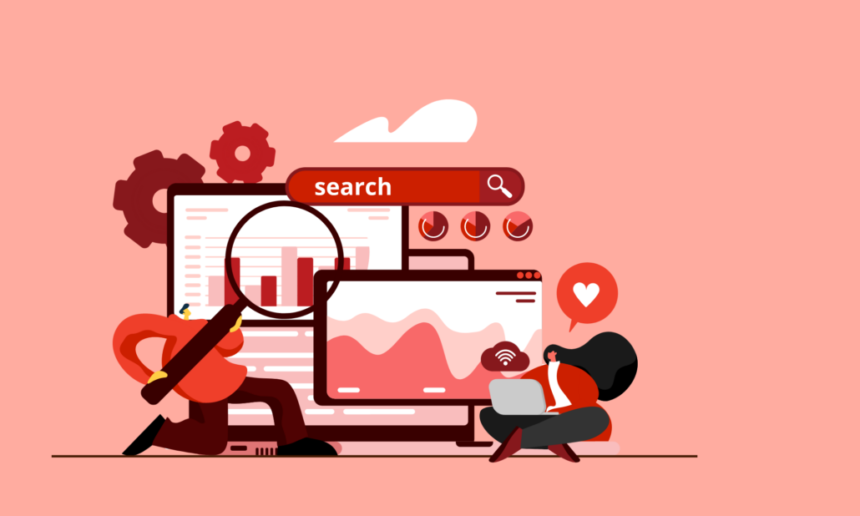Search Engine Marketing (SEM) remains a powerful strategy for businesses looking to improve their visibility and reach potential customers. By leveraging paid advertising on search engines, businesses can drive targeted traffic to their websites and achieve specific marketing goals, such as sales conversions, lead generation, or brand awareness.
However, creating effective SEM campaigns requires a strategic approach, a deep understanding of the market, and optimization skills. In this guide, we’ll explore actionable tips for crafting high-performing SEM campaigns.
1. Understanding Search Engine Marketing (SEM)
Search Engine Marketing involves using paid advertising on search engines to increase the visibility of a website. The most common form of SEM is Pay-Per-Click (PPC) advertising, where advertisers pay each time their ad is clicked by a user. Google Ads is the dominant platform for SEM, though alternatives like Microsoft Advertising (formerly Bing Ads) offer additional opportunities.
a) Why SEM Matters
Immediate Visibility: Unlike organic SEO, SEM offers instant visibility on search engines.
- Advertisement -
Targeted Advertising: Advertisers can reach specific audiences based on demographics, location, device type, and more.
Measurable Results: Detailed metrics allow marketers to assess the performance of their campaigns in real-time.
2. Setting Clear Goals for Your SEM Campaign
Before creating an SEM campaign, it is essential to define clear objectives. These goals will inform every decision you make, from keyword selection to ad copywriting.
a) Common SEM Goals
Increasing Website Traffic: Drive more visitors to your site.
Generating Leads: Encourage users to fill out forms, subscribe to newsletters, or engage with your brand.
Boosting Sales: Directly increase product sales or service conversions.
Brand Awareness: Increase visibility and recognition for your brand.
3. Conducting Keyword Research
Keywords are the backbone of SEM campaigns. Choosing the right keywords ensures that your ads appear when potential customers search for products or services relevant to your business.
a) Tools for Keyword Research
Google Keyword Planner: Provides data on search volumes, competition, and keyword ideas.
SEMrush: Offers in-depth keyword analysis and competitive research.
Ahrefs: Great for discovering keyword opportunities and analyzing competitors’ strategies.
b) Tips for Effective Keyword Research
Focus on User Intent: Choose keywords that match the intent of your target audience. For example, “buy running shoes online” indicates a purchasing intent, while “best running shoes for beginners” suggests informational intent.
Use Long-Tail Keywords: These are longer and more specific phrases that have lower competition and can drive highly targeted traffic.
Consider Negative Keywords: Identify keywords you don’t want your ads to appear for. This prevents irrelevant clicks and saves your budget.
4. Crafting Compelling Ad Copy

Ad copy plays a critical role in capturing users’ attention and encouraging them to click on your ads. It should be clear, relevant, and persuasive, while also meeting the guidelines set by platforms like Google Ads.
a) Key Components of Ad Copy
Headline: The headline is the first thing users see and should include your primary keyword and a compelling call to action.
Description: Provide more detail about your offer, highlight unique selling points (USPs), and include a call to action (e.g., “Shop Now,” “Get a Free Quote”).
Display URL: This is the URL shown in your ad. Ensure it is clean and relevant to the search query.
Ad Extensions: Use extensions like site links, callouts, and structured snippets to provide additional context and improve click-through rates (CTR).
b) Best Practices for Writing Ad Copy
Be Relevant: Align your ad copy with the keywords and user intent.
Highlight Benefits and USPs: Showcase what makes your product or service unique.
Include a Call to Action (CTA): Encourage users to take the desired action (e.g., “Sign Up for a Free Trial”).
Use Emotional Triggers: Connect with users on an emotional level by addressing their pain points or desires.
5. Optimizing Landing Pages for Conversions
Driving traffic to your website is only the first step. Your landing pages must be optimized to convert visitors into customers, subscribers, or leads.
a) Elements of a High-Converting Landing Page
Compelling Headline: Clearly communicate the value proposition and align it with the ad.
Clean Design: Keep the design simple and focused on the main call to action.
Social Proof: Use testimonials, case studies, or reviews to build trust.
Fast Loading Time: Ensure the page loads quickly to reduce bounce rates.
Clear Call to Action (CTA): Guide users toward the desired action with a prominent and persuasive CTA.
b) Tips for Effective Landing Page Optimization
A/B Testing: Continuously test different headlines, CTAs, and designs to see what works best.
Mobile Optimization: Ensure your landing pages are mobile-friendly, as a significant portion of search traffic comes from mobile devices.
Match User Expectations: The content on the landing page should match the promise made in the ad.
6. Bidding Strategies and Budget Management
Effective SEM campaigns require careful budget allocation and bidding strategies. Google Ads and other platforms offer various bidding options based on campaign goals.
a) Common Bidding Strategies
Manual CPC Bidding: You set maximum bid amounts for clicks. This provides more control but requires regular monitoring.
Automated Bidding: Google’s algorithms adjust bids based on performance goals (e.g., maximize conversions, target CPA).
Enhanced CPC (ECPC): Adjusts manual bids for more conversions while maintaining control.
Target ROAS (Return on Ad Spend): Sets bids to achieve a specific return on ad spend.
b) Budgeting Tips
Start Small and Scale: Begin with a manageable budget and scale as you see positive results.
Monitor Cost-Per-Click (CPC): Keep an eye on CPC to ensure your bids are competitive without overspending.
Allocate Budget Based on Goals: Prioritize higher-budget allocation for campaigns with strong ROI potential.
7. Tracking and Measuring Performance
Tracking the performance of your SEM campaigns is crucial for understanding what works and what needs improvement. Google Ads provides robust tools for monitoring campaign metrics.
a) Key Performance Metrics (KPIs)
Click-Through Rate (CTR): The percentage of clicks on your ads compared to the number of impressions.
Conversion Rate: The percentage of clicks that result in a desired action (e.g., purchase, sign-up).
Cost-Per-Conversion (CPA): The average cost of acquiring a customer or lead.
Quality Score: A metric that assesses the relevance and quality of your ads, keywords, and landing pages.
Impression Share: The percentage of times your ad was shown compared to the total available impressions for your target keywords.
b) Tools for Performance Measurement
- Google Analytics: Provides detailed insights into user behavior and campaign effectiveness.
- Google Ads Dashboard: Offers real-time data on campaign performance, including clicks, impressions, and conversions.
- Conversion Tracking Pixels: Track user actions after they click on your ads to measure conversion rates accurately.
8. Optimizing and Scaling Your Campaigns
Continuous optimization is key to maintaining and improving the performance of your SEM campaigns. By analyzing data, making adjustments, and testing new approaches, you can maximize your ROI and stay ahead of the competition.
a) Optimization Strategies
Keyword Refinement: Regularly review your keyword list to remove underperforming keywords and add new opportunities.
Ad Copy Testing: Experiment with different headlines, descriptions, and CTAs to improve CTR and conversion rates.
Negative Keywords: Expand your negative keyword list to prevent irrelevant clicks.
Bid Adjustments: Optimize bids based on device, location, and audience performance data.
b) Scaling Your Campaigns
- Expand Geographically: Target new regions or countries with localized campaigns.
- Increase Budget for High-Performing Campaigns: Allocate more budget to campaigns that deliver strong results.
- Test New Ad Formats: Explore display ads, remarketing campaigns, and video ads for additional reach.
9. Staying Ahead with Industry Trends
The SEM landscape is constantly evolving, with changes in algorithms, consumer behavior, and platform features. Staying informed about the latest trends and adapting your strategy accordingly is essential for long-term success.
a) Voice Search Optimization
As more users rely on voice-activated devices, optimizing for voice search queries can help capture a growing audience.
b) AI and Automation in SEM
AI-driven tools can automate bidding, ad placement, and performance analysis, allowing marketers to focus on strategy.
c) Privacy and Data Regulations
Be aware of privacy regulations, such as GDPR, that affect data collection and targeting practices.
10. Mastering SEM for Business Growth
Crafting effective ad campaigns for search engine marketing requires a deep understanding of user intent, strategic keyword selection, compelling ad copy, and ongoing optimization. By setting clear goals, leveraging data, and staying ahead of industry trends, businesses can maximize their SEM efforts and achieve meaningful results. Whether you’re new to SEM or looking to refine your strategy, following these tips will help you create successful, high-performing ad campaigns that drive traffic, conversions, and long-term business growth.

